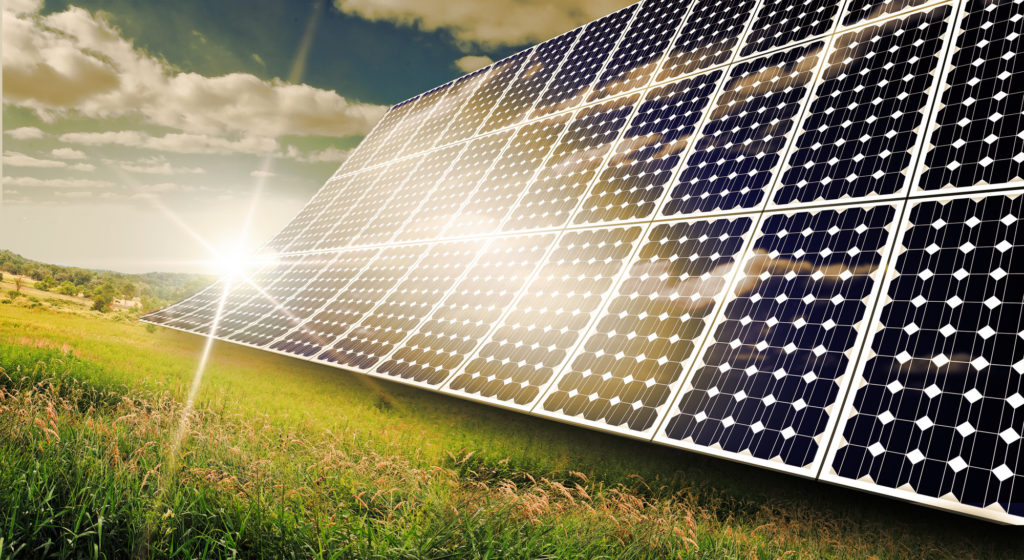
If it’s always sunny in Philadelphia, we hope they’re using that solar power to their advantage. Solar power is becoming an increasingly popular alternative to traditional energy sources, and has even overtaken other traditional energy sources as the most abundant current energy source available to us.
The first solar panel cell was invented half a century ago in 1954, and since then the technology has improved drastically. Get the facts about solar energy, and decide whether or not you should be using it in your own home.
10 Facts About Solar Energy You Didn’t Know
Although the first solar panel cell was made in the 1950’s, humans were using the sun as energy as early as the 7th century when they harnessed its power using glass materials and sunlight to ignite torches.
Romans also used sunrooms to heat bath water and warm rooms. The technology rapidly evolved into the innovations we have today.
There’s a Lot of It
There is no other energy source on earth that’s as abundant as solar energy. That’s probably because the earth is struck with 173,000 terawatts of solar energy every single day, at all times.
That’s more energy than 10,000 times what the earth uses in one day. That means more clean energy comes from the sun each day than we’d ever be able to use. It’s estimated that we’re only using about 0.01% of the sun’s energy.
You can harness some of that power for your own. Over time, solar panel investments pay for themselves, and you can even calculate your solar panel payback period. That means how long it takes to break even on your investment.
Most people’s payback period is about seven to eight years, and then after that time, solar panels are essentially generating money for you.
Solar Panels are Affordable
When you think of installing solar panels, you probably think that’s something only for the very well off, and that the myth is that they’re ultra expensive.
On the contrary, solar technology is declining in price every single year – unlike the prices of oil. A solar panel can operate during peak periods when other resources like coal and oil are at their highest demand, and give back energy to the grid when it’s needed the most.
That means that a solar-powered building’s electric meter runs backward, and generates energy instead of using it.
Some states also offer rebates for installing solar panels. Find the potential incentives available in your state.
You can also learn about solar power options for residential homes and why it will actually pay you in the long run to install solar power. Again, solar panels will eventually start to pay for themselves when they generate energy for you. When you’re considering different types of roofing, it’s time you considered solar.
A Million Solar Systems Have Been Installed
In just the United States, a million solar systems have been installed. And that was back in 2016. The next million installations are set to happen much more quickly than the first million, the timeline estimating the installations to happen in the next few years.
Solar is the most quickly growing energy source in the world, outpacing others by leaps and bounds. Installing solar panels also helps increase the value of your home, so if you’re trying to sell, it can be a point that sets you apart from other houses on the market.
Airplanes Can Fly Using Solar Energy
Not only can airplanes fly using solar energy, but they can fly around the world.
In 2016, Solar Impulse 2 touched down after the first flight around the world with a completely solar-powered plane. The plane has more than 17,000 solar cells, and began and ended its flight in Abu Dhabi. It flew for over twenty-three days in the air.
It was piloted by Bertrand Piccard and Andre Borschberg, who alternated between flying and sleeping. The flight around the world was a feat fifteen years in the making.
You Can Make It a Communal Experience
A community solar project is also sometimes called a solar garden. It’s a solar plant that allows the members of the community to share power, splitting energy between households.
Perhaps the community you live in doesn’t allow you to install solar panels, or you prefer not to place them directly on your home. Community solar allows you to generate electricity from a solar farm and direct it to your home. With this technology available, now solar energy is available to anyone.
You can use community solar in two different ways, primarily. You can opt to own a small portion of the solar panels being offered, while benefitting from the entirety of the panels in the group. Or you can subscribe to the community panels and receive energy at a lower rate.
The only catch is that you have to live within the solar project’s network area. It’s like a community garden: if you live near it, you can use what it produces.
It Doesn’t Turn Off at Night
It seems common sense to think that when the sun goes away, so does your solar energy. Brands like Tesla and Mercedes and planes that fly on solar energy are saying no, it doesn’t.
Solar batteries retain a depth of discharge past the time it takes for the sun to cycle, so that a fully charged battery can power your house overnight even when the solar panels aren’t being charged by the sun.
The typical U.S. household uses about 30 kilowatt-hours of energy each day. An average solar battery delivers 10 kilowatt-hours of energy. On three solar batteries alone, you could power your entire house for a day with nothing but solar energy, and not have to charge until the next morning.
A solar battery lasts anywhere between five and fifteen years, so you’re powering your home up for more than a decade on clean energy. The most common types of solar batteries are lead acid, lithium ion, and saltwater, with lead acid being the most affordable.
The Oldest Sattelite in Orbit is Solar-Powered
The Vanguard 1 was launched in March of 1958, the second satellite ever launched by the U.S. It was the first satellite to use solar power, and it’s still orbiting the earth, making it the oldest satellite in space.
Originally, the satellite was estimated to be able to orbit for the next two thousand years. While it’s still going strong, the solar radiation pressure that the satellite is experiencing is expected to cut its lifespan down to only 240 years. Still, the panels were made decades ago, and solar technology has increased by leaps and bounds since the satellite went into orbit.
The solar panels that were made for the Vanguard 1 produced about 1 Watt of power per cell, much less powerful than the solar panels we have available today.
The World’s Largest Solar Plant is in the Mojave Desert
The Ivpanah Solar Electric Generating System in the Mojave Desert looks like it’s from another world. It started operating fully in 2014 after construction began in 2010. The electricity generated by the plant is enough power to serve 140,000 homes per year in California.
The complex reduces carbon dioxide emissions by about 400,000 tons per year. It operates as a three-unit power system, so three plants all work together to create combined energy. The entire plant spans about 3,500 acres.
The Sun Will Eventually Die
Solar energy is a renewable source, but the sun will eventually die out. It’s estimated that the sun was born about 4.57 billion years ago. Eventually, the sun will exhaust its nuclear fuel.
Fortunately, we don’t have to worry about this happening anywhere close to our lifetime. It will take another five billion years for the hydrogen reserves on the sun to completely deplete themselves, so you can go ahead and install those solar panels without thinking twice.
It’s Creating Jobs
The solar energy industry is making jobs six times more quickly than the rest of the job market. By 2030, it’s estimated that more than 250,000 solar workers will be contributing to the U.S economy.
Each year, growth continues to climb monumentally in the field of solar work. Investments in the Energy Department have fast-tracked this growth, and it doesn’t show signs of slowing down. Currently, there are about 120,000 workers in this job sector.
Some estimates say that the job growth in this field is even higher than more conservative estimates – it could be growing twelve times faster than the U.S. economy. Since 2017, the U.S. Department of Energy and Employment employs more people than gas, coal, and oil all combined.
Harness the Power
When you look at all the facts about solar energy, it’s obvious that it’s the clean energy source of our future. If you want to stay a step ahead of the curve, consider installing solar panels now – they’re much less costly than you probably once believed them to be.
You can use your solar panels for powering anything you need – even in the less sunny months, you can use the power to do things like heat your home.
You can choose between installing the panels on your own home or getting your power from a community source. Either way, solar power is here to stay, and it’s time that you use it to your advantage.

